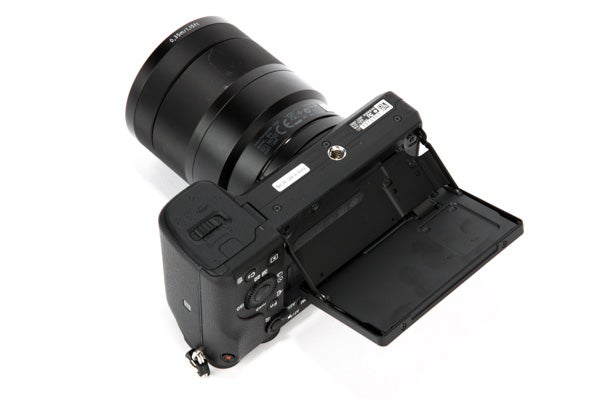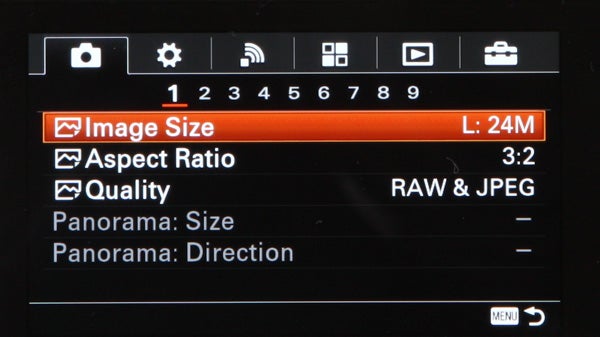With 425 phase-detection AF points, continuous shooting at 11fps with autofocus, a 24.2-million-pixel APS-C CMOS sensor, 4K video capture and a whole host of other features, the Sony Alpha 6300 takes APS-C compact system cameras to a new level. Richard Sibley puts it through its paces.
Sony Alpha 6300 review
Sony Alpha 6300 review – Features

Before we come on to the exciting new features, let’s get the key points out of the way. The Alpha 6300 uses a 24.2-million-pixel-resolution Sony Exmor APS-C-sized CMOS sensor. While this resolution may not be anything new and exciting, the fact that the sensor now has the world’s highest number of phase-detection AF points is. The sensor has also been improved by using copper wiring, which can be laid thinner than conventional wiring. This allows for more light to reach the sensor and a larger photodiode to capture that light. The result is that Sony claims the camera has an improved signal-to-noise ratio over the sensor of its predecessor, and as such the camera has a sensitivity range of ISO 100-25,600, which is expandable to ISO 51,200. This is 1 stop more than its predecessor.
Some people may have expected the Alpha 6300 to have a backside illuminated (BSI) sensor, especially given that Sony has a 42-million-pixel BSI full-frame sensor in the Alpha 7R II. However, it is perhaps asking a little too much for the Alpha 6300 to have a newly developed phase-detection AF system and BSI.

On the rear of the camera is a fairly standard wideangle, 3in, 921,000-dot screen, but it’s in the electronic viewfinder where Sony has worked its magic. The OLED viewfinder has a 2.4-million-pixel resolution, which is higher than the 1.44-million-dot EVF in the Alpha 6000, but it should be noted that it is the same as the much older NEX-6. Sony has, in effect, reintroduced this resolution, so it is difficult to see it as a brand-new addition. However, the 2.4-million-dot EVF is still on par, or better than most of the camera’s competition. What is impressive is the 120fps display refresh rate of the EVF. This high-speed rate provides a view with no discernible lag and a very realistic electronic view of the scene.
Next up on the list of new features is the continuous shooting rate. The Alpha 6300 shoots at an impressive 11fps, while metering and autofocusing. This is great, but there is also a secondary high-speed continuous shooting mode that shoots at a reduced rate of 8fps while metering and autofocusing. ‘Why the lower shooting rate?’ Well, when shooting at this reduced rate, the viewfinder has minimal shutter blackout and presents a live view between shots. Previously, this was a problem with compact system cameras. Early CSCs simply show a completely black screen between shots. On more recent cameras a quick flash of the last image taken is shown between shots. Some do show a live view image, but only with a reduced burst rate of 4-6fps. All of this can make it difficult to frame a moving subject. The 120fps refresh rate of the Alpha 6300, and fast readout of the sensor, mean that the Alpha 6300 can truly keep up when shooting at 8fps.
Sony has gone back to the drawing board somewhat for the AF system of the Alpha 6300, and the new 425 phase-detection points cover virtually the whole frame. For those harder-to-reach corners, there is a further 169 contrast-detection AF, resulting in a comprehensive edge-to-edge focus point array.

As you would expect from a Sony camera, there is a huge number of additional features built into the camera, and short of writing a guidebook on them there simply isn’t enough space or time to go into them all here. There is in-camera panoramic shooting, HDR bracketing, NFC and Wi-Fi, and the ability to add additional features to the camera via Sony’s PlayMemories mobile applications. There are quite a few available, including various timelapse and star-trails apps, as well as the Sky HDR app, which takes an exposure of both the sky and the land and blends them for a gradient-filter-like effect. Sony regularly comes up with new apps for its cameras, so it is worth checking to see what the latest ones can do.




